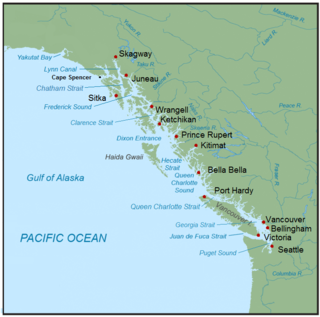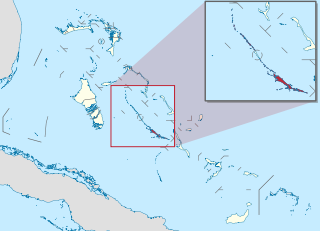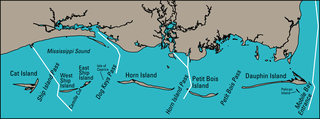Alveolar consonants are articulated with the tongue against or close to the superior alveolar ridge, which is called that because it contains the alveoli of the upper teeth. Alveolar consonants may be articulated with the tip of the tongue, as in English, or with the flat of the tongue just above the tip, as in French and Spanish.

The Western Hemisphere is the half of Earth which lies west of the prime meridian and east of the antimeridian. The other half is called the Eastern Hemisphere. In geopolitical terms, the context in which the term is most often used, the Encyclopedia Britannica defines it as "North and South America and the surrounding waters. Longitudes 20°W and 160°E are often considered its boundaries." It may be used in a cultural or geopolitical sense as a synonym for the "New World".
Webster's Dictionary is any of the English language dictionaries edited in the early 19th century by American lexicographer Noah Webster (1758–1843), as well as numerous related or unrelated dictionaries that have adopted the Webster's name in honor. "Webster's" has since become a genericized trademark in the United States for English dictionaries, and is widely used in dictionary titles.

Merriam-Webster, Inc. is an American company that publishes reference books and is especially known for its dictionaries. It is the oldest dictionary publisher in the United States.

The Korea Bay, sometimes the West Korea Bay, is a bight and the northern extension of the Yellow Sea, between the southeastern coastline of China's Liaoning province and the western coastline of North Korea's North Pyongan, South Pyongan and South Hwanghae provinces. It is separated from the Bohai Sea by the Liaodong Peninsula, with Dalian's Lüshunkou District marking its western end, and westernmost tip of North Korea's Ryongyon County as its eastern end.

The Inside Passage is a coastal route for ships and boats along a network of passages which weave through the islands on the Pacific Northwest coast of the North American Fjordland. The route extends from southeastern Alaska in the United States, through western British Columbia in Canada, to northwestern Washington state in the United States. Ships using the route can avoid some of the bad weather in the open ocean and may visit some of the many isolated communities along the route. The Inside Passage is heavily travelled by cruise ships, freighters, tugs with tows, fishing craft, pleasure craft, and ships of the Alaska Marine Highway, BC Ferries, and Washington State Ferries systems. Coast Guard vessels of both Canada and the United States patrol and transit in the Passage.

Shelikof Strait is a strait on the southwestern coast of the U.S. state of Alaska between the Alaska mainland to the west and Kodiak and Afognak islands to the east.

Exuma is a district of The Bahamas, consisting of over 365 islands, also called cays.
Bruit, also called vascular murmur, is the abnormal sound generated by turbulent flow of blood in an artery due to either an area of partial obstruction or a localized high rate of blood flow through an unobstructed artery.

The Mississippi Sound is a sound along the Gulf Coast of the United States. It runs east-west along the southern coasts of Mississippi and Alabama, from Waveland, Mississippi, to the Dauphin Island Bridge, a distance of about 90 miles (145 km). The sound is separated from the Gulf on its southern side by the Mississippi–Alabama barrier islands: Cat, Ship, Horn, West Petit Bois, Petit Bois, and Dauphin. Ship, Horn, West Petit Bois and Petit Bois Islands are part of the National Park Service's Gulf Islands National Seashore. Those islands separate the sound from the Gulf of Mexico. The sediment of the islands was created partly by the ancient Mississippi River when the St. Bernard Lobe of the Mississippi Delta was active over two thousand years ago. The expansion of the St. Bernard subdelta slowly isolated the Mississippi Sound from ocean dynamics of the open Gulf of Mexico.

Hello is a salutation or greeting in the English language. It is first attested in writing from 1826.

Nansen Sound is an uninhabited strait in Qikiqtaaluk, Nunavut, Canada. It lies between western Grant Land on Ellesmere Island and Axel Heiberg Island. Tanquary Fiord or Greely Fiord enters the sound from the east.
Massacre Bay is an inlet on the southeast coast of the island of Attu in the Aleutian Islands in Alaska. Massacre Bay was among the landing sites of United States Army troops in the Battle of Attu in May 1943, which led to the recapture of the island from the Japanese during World War II.
Holtz Bay is an inlet on the northeast coast of the island of Attu in the Aleutian Islands in Alaska.

Chichagof Harbor is an inlet on the northeast coast of the island of Attu in the Aleutian Islands in Alaska. It is named after Russian Admiral and polar explorer Vasily Chichagov. It is the location of the Aleut village served by an American pastor and his wife. It was also where some heavy fighting took place during the recapture of the island from the Japanese during the Battle of Attu in World War II and afterwards was the site of Battery B 42nd Coast Artillery Battalion.
Hadley Bay is an Arctic waterway in the Kitikmeot Region, Nunavut, Canada. It is located in western Viscount Melville Sound, by northern Victoria Island. It is east of Wynniatt Bay, and 250 km (160 mi) north of the community of Cambridge Bay.
Oyster Bay, also known as Oyster Bay Harbor, is an inlet of Long Island Sound on the north shore of Long Island in New York in the United States.
Corson Inlet is a narrow strait on the southern coast of New Jersey in the United States.

The Exuma Cays Land and Sea Park is a protected area in the Exuma Cays of the Bahamas. The protected area extends from Shroud Cay in the north to Bell Cay in the south. The vegetation consists of mangrove communities, with the east sides being clad in low scrub and the western sides with taller scrub. There are many epiphytic orchids and bromeliads.












